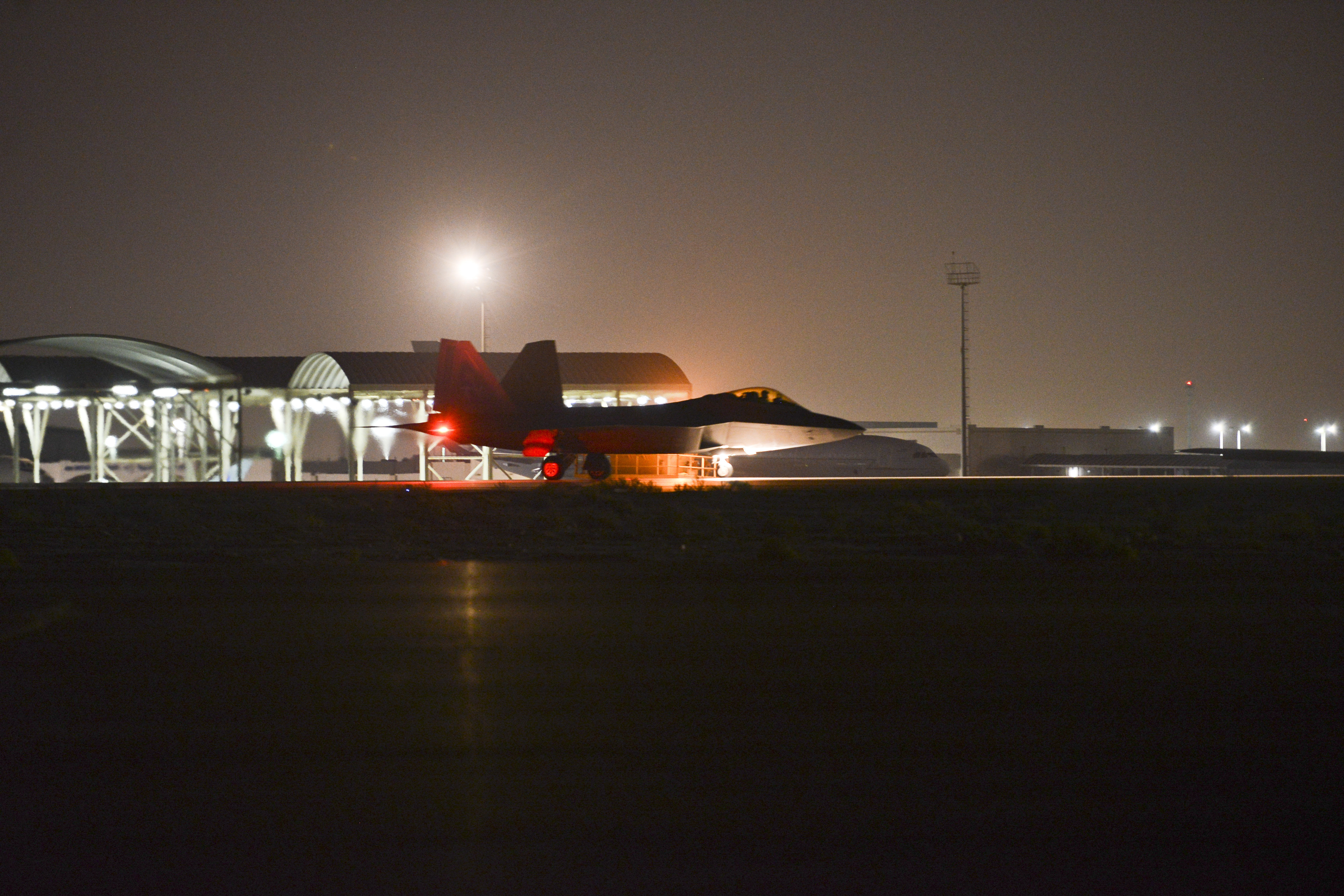
An F-22 Raptor assigned to the 95th Expeditionary Fighter Squadron at Al Dhafra AB, United Arab Emirates, taxis to the runway in order to participate in a new offensive campaign in Afghanistan Nov. 19, 2017. Air Force photo by TSgt. Anthony Nelson Jr.
US aircraft finished 2017 flying combat missions in Afghanistan at the fastest rate in years—dropping more bombs last year than any other year since 2011 as the war on ISIS in Iraq and Syria hit its lowest total since it began.
US aircraft in the final two months of 2017 kicked off a new campaign against the Taliban, called Jagged Knife, targeting Taliban drug facilities inside Afghanistan. After an initial salvo involving F-22s, aircraft including F-18s, B-52s, F-16s, and MQ-9s hit 11 more narcotics facilities in Helmand Province.
This contributed to 455 total strikes in December, and 2017’s total of 4,361 strikes in Afghanistan—the highest strike total since 2011’s total of 5,411, according to year-end numbers released by Air Forces Central Command.
Tanker sorties to fuel this new offensive also increased, reaching 5,714, which also is the highest in the past three years. However, intelligence, surveillance, and reconnaissance flights did not increase in 2017 in Afghanistan, falling instead to 15,404, more than 4,000 fewer than the year before, and less than half that of 2014.
In December, US and coalition aircraft released a total of 584 weapons in the air war against ISIS, the lowest since August 2014 (there were ?269 weapons released during that first month of conflict). However, the final tally for the year was far more as coalition aircraft helped US-backed fighters rout ISIS from its so-called capital of Raqqa, Syria, and Mosul, Iraq.
There were a total of 39,577 bombs dropped as part of Operation Inherent Resolve in 2017, bolstered by 13,243 tanker sorties and 14,015 ISR sorties.